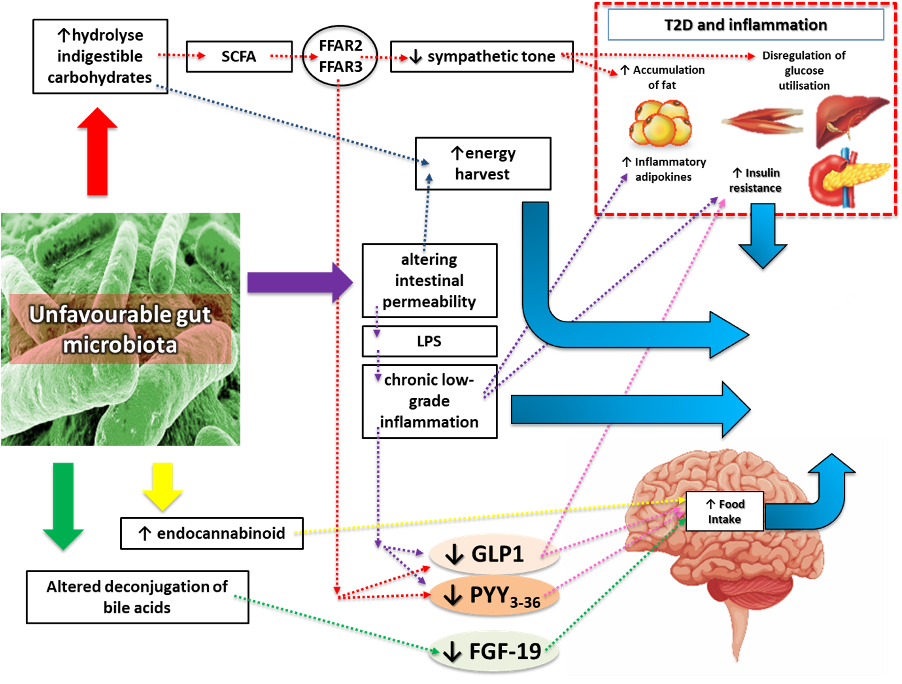
Figure 7: Schematic diagram illustrating the possible causative links between an altered gut microbiota and obesity. The hydroxylation of indigestible carbohydrates and the altered intestinal permeability could lead to increased energy harvest and weight gain. The production of certain types of SCFA can reduce the sympathetic tone favoring fat accumulation in the adipose tissue and dysregulation of glucose utilization in muscles and the liver. Gut microbiota can induce a leakage of LPS into the systemic circulation (endotoxemia) and chronic low-grade inflammation. This is in turn responsible of insulin resistance and weight gain. The increased endocannabinoid tone could induce food intake. SCFAs, inflammation and BAs perturbations may all lead to a reduced activation of anorectic pathways. All these mechanisms could be responsible for weight gain, inflammation and obesity-related comorbidities. Abbreviations: FGF-19, fibroblast growth factor-19; GLP-1, glucagon-like peptide 1; PYY3-36, peptide tyrosine-tyrosine 3-36; SCFA; short chain fatty acid; LPS, Lipopolysaccharide; FFAR2 and FFAR3, free fatty-acid receptors 2 and 3; T2D, type 2 diabetes.
